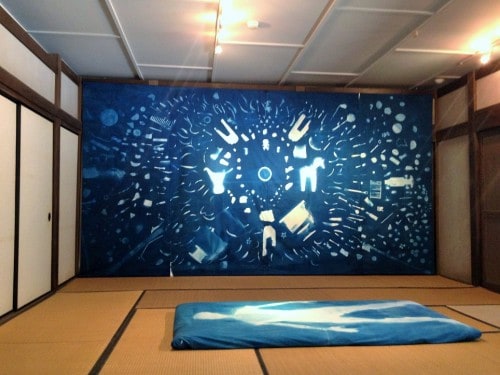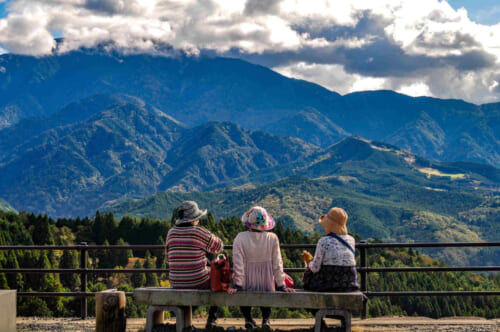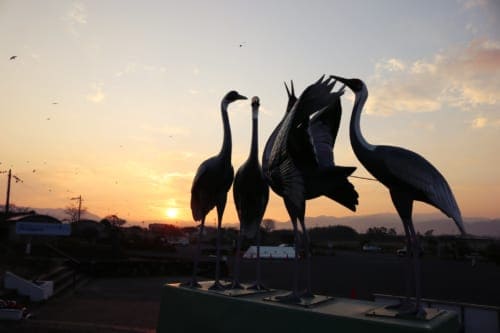Approximately an hour south of Tokyo, Kamakura feels like a world apart. This coastal city, cradled between forested hills and the sea, boasts a laid-back style that’s pretty much evident the moment you set foot outside the train station. Once the seat of the Kamakura shogunate and the country’s military capital during this period, Japan’s fascinating medieval history comes to life in its countless ancient shrines and temples.
For starters, iconic spots like Tsurugaoka Hachimangu Shrine and the Great Buddha of Kamakura are a good chance to explore the cultural depth of a city that has stood for centuries and that nowadays, is one of the top destinations in the Kanto region, both for international visitors and residents of Greater Tokyo. A haven for beach-goers, hiking enthusiasts or history nerds, Kamakura has been one of my favorite choices for a quick train escapade. Keep reading and you’ll understand why.
Kamakura and the Birth of the Shogunate
Kamakura’s significance in Japanese history is undeniable. In 1185, the powerful Minamoto no Yoritomo established his bakufu or military government here, marking the beginning of the Kamakura shogunate. This period signaled a seismic shift in Japan’s political landscape, as power transitioned from the Imperial Court in Kyoto to the warrior class, laying the foundation for centuries of samurai rule. Kamakura, a natural fortress protected by mountains on three sides and the sea on the fourth, was a strategic choice for the Minamoto clan’s new headquarters, quickly transforming the city into the political and military heart of Japan.
The shift in leadership brought upon by the Kamakura shogunate (1185-1333) was the dawn of a new era where samurai culture took root and blossomed. This period saw the establishment of key governmental institutions and the development of Japan’s first legal code (Goseibai Shikimoku), aimed at bringing order to a war-torn country. Under Yoritomo’s leadership, Kamakura evolved into a bustling urban center, dotted with temples and shrines that reflected both the city’s spiritual importance and the shogunate’s political might.
Even after the Shogunate’s eventual fall in 1333, Kamakura’s influence lingered. Today, the city’s historical legacy can be felt in its well-preserved temples, shrines, and cultural sites, a fascinating sample of the world of medieval Japan and a lasting reminder of an era when Japan’s warrior class reigned supreme.
Tsurugaoka Hachimangu Shrine: The Spiritual Center of Kamakura
Founded in 1063 and later expanded by Minamoto no Yoritomo, Tsurugaoka Hachimangu 鶴岡八幡宮 is the most important Shinto shrine in Kamakura and a symbol of the city’s samurai roots. Dedicated to Hachiman, the god of war and protector of the Minamoto clan, the shrine sits at the spiritual and geographical heart of Kamakura. When Yoritomo established the Kamakura shogunate, he not only positioned the shrine as a religious center but also as a display of his clan’s political dominance.
The shrine is just a short walk away from Kamakura Station and you can reach it after walking through the lively and charming Komachi Dori 小町通り, one of the most important commercial streets in Kamakura. Leading up to the shrine, you’re greeted by a long, wide pathway, the Dankazura, which extends from Wakamiya Oji Avenue (which goes straight to the city’s coastline) all the way to the shrine itself. Flanked by cherry trees, it’s especially beautiful in spring when the blossoms frame the path.
The shrine’s grounds are as rich in historical significance as they are in natural beauty. After ascending the stone steps to the hongu, you can enjoy panoramic views of Kamakura and the surrounding landscape. Below, the two ponds on either side of the shrine carry a strong symbolism: one pond represents the Minamoto clan, with three islands, as the number three is considered auspicious, while the other, with four islands, symbolizes their defeated rivals, the Taira clan, because the number four is often associated to death.
Besides the main hall, Tsurugaoka Hachimangu hosts smaller shrines, like the Maruyama Inari Shrine, dedicated to the deity of prosperity, and the Shirahata Shrine, which honors the spirits of Minamoto no Yoritomo and his brother Yoshitsune. Make sure not to miss these quiet corners of an otherwise constantly busy place!
Throughout the year, Tsurugaoka Hachimangu remains an active cultural center, hosting a variety of festivals and traditional ceremonies. The Yabusame event, where archers on horseback shoot arrows at targets while galloping down the shrine’s long pathway, is a tremendous highlight. This event, rooted in ancient samurai training, draws visitors from across Japan, and is a very interesting remainder of the warrior culture that defined Kamakura.
The Great Buddha of Kamakura: An Iconic Masterpiece
One of Japan’s most recognizable symbols, the Great Buddha of Kamakura or Kamakura Daibutsu 鎌倉大仏 stands over 13 meters tall, casting a peaceful gaze across the grounds of Kotokuin Temple 高徳院. This colossal bronze statue of Amida Buddha was originally cast in 1252 and reflects the widespread influence of Pure Land Buddhism, which was highly popular during the Kamakura period.
Amida Buddha, in particular, became a central figure in Japanese religious life, representing salvation and the promise of rebirth in the Western Pure Land, a heavenly paradise believed to be attainable by faith alone. While the statue once sat within a grand temple hall, natural disasters like typhoons and earthquakes destroyed the structure several times, eventually leaving the Buddha exposed to the elements. Temple priests might disagree with me, but I’m pretty certain the image of this statue of Amida Buddha has against the backdrop of mountains and sky looks much better.
 Kotoku-in
Kotoku-in
TOURIST ATTRACTION- 4 Chome-2-28 Hase, Kamakura, Kanagawa 248-0016, Japan
- ★★★★☆
Other Nearby Attractions
Despite its weathered appearance, the statue remains well-preserved, thanks to multiple restorations over the centuries. What makes the Kamakura Daibutsu particularly special is the opportunity to explore the statue’s interior — a rare feature that allows visitors to appreciate the craftsmanship up close. Entering the hollow structure reveals fascinating details about its construction, including the use of separate bronze plates and ingenious reinforcements that have helped it withstand centuries of wear.
Tsurugaoka Hachimangu and the Great Buddha are the stars of Kamakura, there are plenty of other attractions worth adding to your itinerary. Hasedera 長谷寺 is an impressive Buddhist Temple just a short walk from the Great Buddha and is known for its beautiful gardens and the eleven-headed Kannon statue. On the northern side of Kamakura there are also several interesting spots, like Engakuji 円覚寺, one of Kamakura’s five great Zen temples, which is located amid lush surroundings and stunning views, particularly in autumn when the leaves turn vibrant shades of red and gold.
For those with extra time, Kamakura’s coastal areas are also worth exploring. A visit to Yuigahama Beach is a nice contrast to the city’s historical sites and is perfect for a seaside stroll. And if you ride the Enoden Line, Enoshima is less than 30-min away. For hiking enthusiasts, the Daibutsu Hiking Trail offers scenic paths through the surrounding hills, with panoramic views of Kamakura and beyond.
 Kamakura Yuigahama Beach
Kamakura Yuigahama Beach
NATURAL FEATURE- Kamakura Yuigahama Beach, 4 Chome Yuigahama, Kamakura, Kanagawa 248-0014, Japan
- ★★★★☆
 Tsurugaoka Hachimangu
Tsurugaoka Hachimangu
TOURIST ATTRACTION- 2 Chome-1-31 Yukinoshita, Kamakura, Kanagawa 248-8588, Japan
- ★★★★☆
Getting to Kamakura and Practical Tips
The most common way to get to Kamakura from Tokyo is by train, with several options available. The JR Yokosuka Line takes around one hour from Tokyo Station directly to Kamakura Station, making it the fastest and most direct route. Another option is the Shonan-Shinjuku Line, which departs from Shinjuku and also takes about an hour.
Once you arrive in Kamakura, most of the key attractions are easily accessible on foot, especially those in the city center. For quicker access to the Great Buddha or other important spots, local buses and the Enoden train are convenient options.
To avoid the crowds, consider visiting Kamakura on weekdays or early in the morning, especially during peak seasons like spring and autumn. As Kamakura is known for its many hiking trails, comfortable shoes and weather-appropriate clothing are highly recommended if you’re planning to explore beyond the city’s main streets.
Kamakura is one of those places that never feels like a simple day trip. History is everywhere you look. And so it has a way of pulling you into its past while reminding you that its charm is still very much alive today. And if you happen to have had enough of temples, its fun beach vibe should be enough alternative for any visit to be well worth your time. After countless visits, it’s still one of my favorite places, and I hope it will capture you in the same way.







No Comments yet!